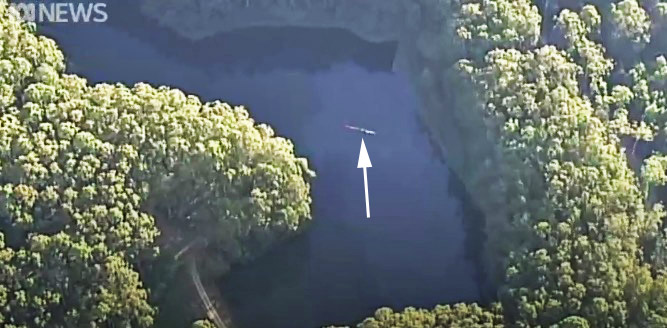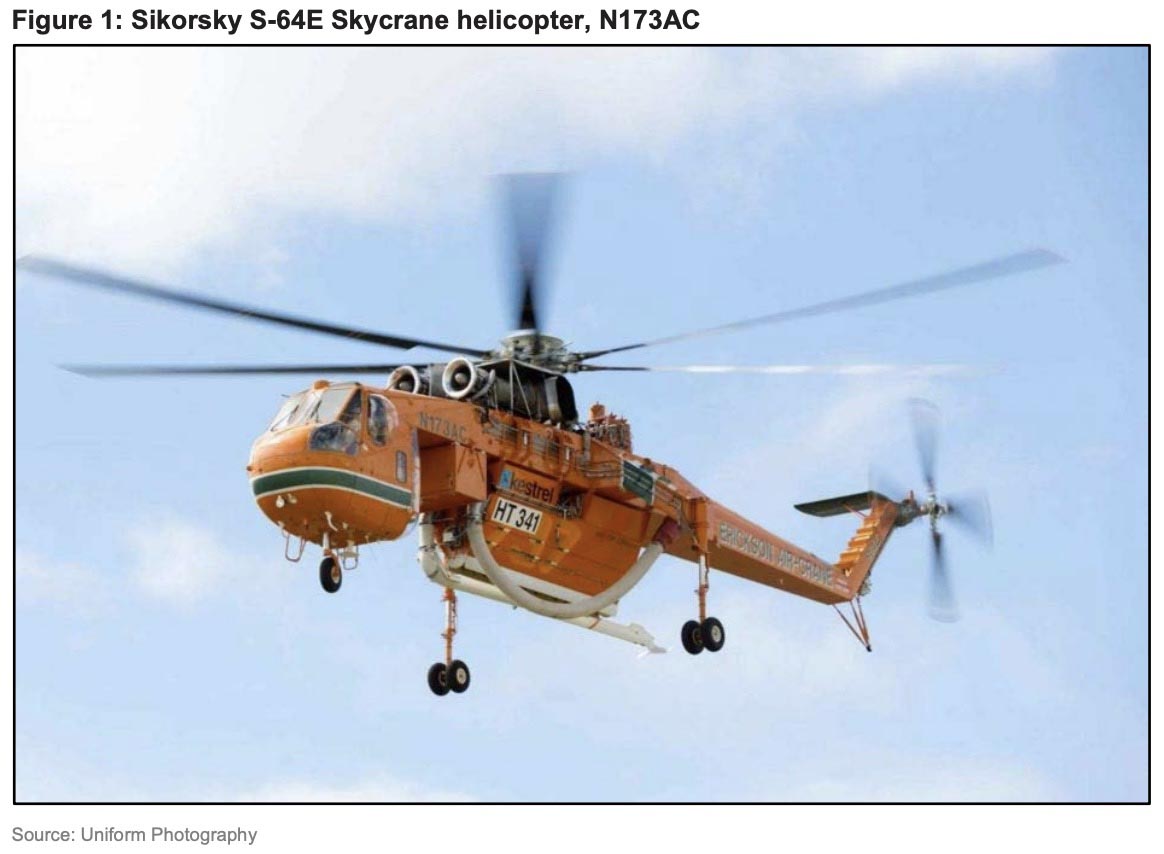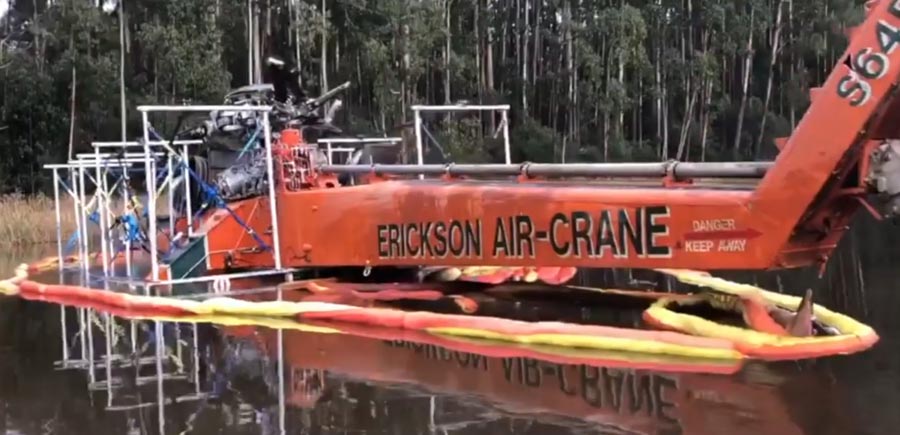
The Australian Transport Safety Bureau determined that the Air-Crane helicopter that crashed into a lake January 28, 2019 in Victoria, Australia was a victim of vortex ring state (VRS). The accident occurred on a firefighting mission as it descended to draft water at a narrow lake with steep sides.
From the report released April 17, 2020:
The topography, high rate of powered descent, and steep flare that reduced the airspeed, created conditions conducive to the onset of VRS. The crew reported that the rapidity of onset and dimensions of the dip site did not provide enough time or space to maneuver sideways to effect a recovery.

Here is what I wrote about the accident on January 28, 2019 in a comment below the report of the accident:
If the helicopter was attempting to hover to draft water to refill its tanks, the fairly narrow section of the lake with what appears to be steep rising terrain nearby may have been a factor in the confined space. The Air-Crane has six blades on the main rotor with a diameter of 72 feet. It may have encountered what helicopter pilots refer to as a “Vortex Ring State” or VRS. The canyon slopes may have prevented the massive rotor wash from diffusing and could have caused the cushion of air beneath it to become chaotic as the helicopter neared the water surface, reducing lift.
VRS in addition to density altitude was a factor in the crash of the MH-X Silent Hawk that transported Seal Team 6 as they attacked the hideout of Osama bin Laden in Pakistan in 2011. The helicopter was landing inside a yard surrounded by high walls when it lost lift. The pilots had practiced landing in a full-scale model of the site, but the walls in the model were represented by chain link fencing material, and were not solid like the walls around Osama bin Laden’s house. The rotor wash would have been more easily diffused through the chain link fence during the rehearsals.

Two crewmembers were not injured, but one sustained a knee injury. In May, 2019 the helicopter was recovered after a complex salvage process.

Below are excerpts from the ATSB report about the Air-Crane incident (which you can view here):
…After a number of water drops, the aerial attack supervisor (AAS) re-tasked the crew to fight a flame front further north, which was east-northeast from the dip site. Each drop was also incrementally further north. This resulted in the crew gradually tightening the approach to the dip site.
During the occurrence approach, the tighter approach resulted in a greater than normal flare to arrest the aircraft at the aiming point in the dip site. The higher nose pitch up prompted the SIC to advise the PIC to move forward of the trees before descending any further to ensure tail rotor clearance. Clear of the trees, the flare was increased.
While descending with a nose-high attitude, the aircraft struck the water tail-first, submerging and removing the tail rotor, causing rapid rotation to the right through one and half turns. While rotating, the main rotor blades separated as they contacted water. The right cockpit door separated from the fuselage, and the aircraft came to rest on its left side, submerging the cockpit.
Each crewmember recalled the rehearsed drills from their helicopter underwater escape training (HUET). They identified their seat belt and nearest exit to orientate themselves in the aircraft. They all waited until the last moment to draw a breath, and did not unbuckle and exit the helicopter until motion had ceased. The crew reported that it was not possible to see anything underwater, and that jet fuel contamination was present.
The SIC in the right seat exited through his doorway, from which the door was already missing. The PIC could not open his door so he swam across the cabin (up) and was assisted by the SIC to exit through the right hand door. As the rear door was jammed, the crew chief in the aft seat pushed out a window from the rear of the cabin, and exited through it.
Neither pilot unplugged their helmet. However, the extension cords from the aircraft to the helmet plug allowed the plug to release, preventing the helmets from snaring the pilots. All three crew escaped, and inflated their life jackets. Two crew were uninjured, and one crewmember sustained a knee injury.
At the time of the accident, crews aboard S-76 and S-61N helicopters were assessing the potential of the dip site for later use in night operations. An AAS aboard the S-76 relayed details of the accident to an incident controller who enacted the emergency response plan. Neither the S-76 nor the S-61N was equipped or able to provide direct assistance, other than monitoring, and relaying information. Following exit from the helicopter, the only form of communication available to the Skycrane crew was hand signals. They gave thumbs-up indications to the crew of the overhead S-61N to advise that they were okay. The Skycrane crew then swam to shore and trekked through dense bush to a road where they were met by rescuers.
Findings
These findings should not be read as apportioning blame or liability to any particular organization or individual.
- The crew conducted a tight descending right hand turn into the dam [lake], inside the upper margins of the flight envelope. This approach required a steep flare on arrival and likely resulted in the rapid onset of vortex ring state.
- The dam’s [lake’s] steep sides and narrow tapered body provided limited opportunity for vortex ring state recovery actions, contributing to collision with water.
- The Crew Chief’s presence aboard the aircraft during firebombing operations exposed him to unnecessary risk.
- All crewmembers credited their survival to skills learned and practiced in Helicopter Underwater Escape Training. In addition, the helmet cord extension cables detached easily from the aircraft, contributing directly to the crew’s egress from the flooded cockpit.
